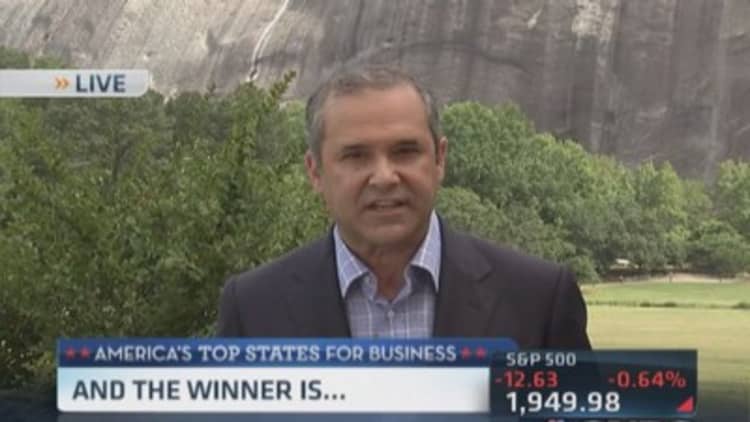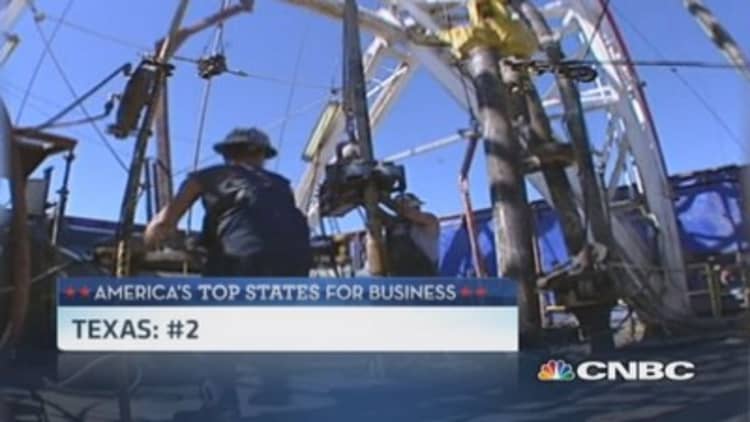For a snapshot of how President Obama's Regional Innovation Cluster Initiative is working, take a look at the public-private partnership between the states of Indiana, Kentucky and Ohio with the goal of bringing a focus and cohesiveness to all the different water entities in this H2O-rich area.
Founded in 2011 as the first-of-its-kind joint backing of the Environmental Protection Agency and Small Business Administration, the nonprofit Confluence is the table around which water-related companies (there are about 250 in the area), government agencies, venture capitalists and universities pull up chairs to develop technologies and solve issues. The EPA provided $5 million for research that is helping to attract companies to the cluster for public/private collaborations, while the SBA provided website support.
"We are the means by which all of these interacting parts—the research, legal, the piloting of technology in the field—interact," said Alan Vicory, Confluence's board chairman. "We help facilitate the efficiency of the ecosystem—in this case, toward the development and deployment of new technologies—and in doing that, you create economic development by growing indigenous businesses and attracting new ones from the outside."
Read MoreGuess this year's top state for business
How cutting-edge is Confluence? Well, it helped one company, Pilus Energy, in its hometown of Cincinnati develop tiny bacterial robots to turn sewage into electricity and have the promise to change the wastewater industry. After learning about the company through Confluence, the EPA is allowing the $1.7 million project to take place at the EPA's test and evaluation facility, which it runs in partnership with the Metropolitan Sewer District of Greater Cincinnati.
Another start-up that Confluence has helped is CitiLogics, which makes analytical software to help municipal water companies more efficiently analyze and monitor water supply and infrastructure. And given that there are more than 880,000 miles of piping and other subsurface infrastructure in the U.S., that's no drop in the bucket. Thanks to Confluence's connections, CitiLogics has been able to fast-track product development and beta-test its software at Northern Kentucky Water District and Greater Cincinnati Waterworks.
"That was really helpful for us, because as a start-up—especially in the water industry, which is not generally a rapid adopter of new technologies—we really need to have full-scale beta tests successfully done in order to potentially change the industry," said co-founder Jim Uber, who's also a member of Confluence's executive committee. "Confluence connected the dots for us."
The biggest dots that Confluence connected so far was getting all three states in the region—Ohio, Kentucky and Indiana—to agree to work together to develop water technologies and expedite testing with the three state environmental agencies simultaneously. Because guidelines and requirements in all three states will be the same, the "memoranda of cooperation" makes it easier for companies to start up or move to the region.
Read MoreThis is a big-time player in farming
"Instead of everyone creating their own cluster and we end up competing with each other, we've joined forces to become a lot stronger," said Bill Ball, vice president of research at the University of Cincinnati who also sits on Confluence's executive committee. "We have a very long history around clean water in southwest Ohio, southern Indiana and northern Kentucky. Confluence is finally bringing all these pieces together so that the whole is greater than the sum of the parts."
President Obama has made regional economic growth one of the key initiatives of his second term, and Confluence is one of 56 federally-funded clusters across the U.S., including 18 advanced manufacturing collaborations, 10 clean-energy technology projects, and various other industries that are as diverse as food, water and wood.
"Clusters are basically organic facts of the economy that have been around a long time—certainly since at least the beginning of cities," says Mark Muro, a senior fellow and director of policy for the Metropolitan Policy Program at Brookings Institution in Washington, D.C. "Companies choose to locate near each other and collaborate with each other because it serves their interest, but I find that clusters need to develop a focal point."
Which is where Confluence comes in. What makes it unique compared to the other clusters, including the 10 others centered around water in Boston, Milwaukee, Tucson and elsewhere is that Confluence is a multistate cluster, which provides greater growth potential than the single state-based model alone. There have been other clusters that span state lines, such as the Tri-State Manufacturing Association of Minnesota and North and South Dakota, and the Northwest Food Processors Association (NWFPA) of Oregon, Washington and Idaho. In the seven years since commencing aggressive cluster activities, the NWFPA has improved member plants' energy efficiency by 5 percent, has saved $13.1 million through operational efficiencies and has created 560 jobs, according to a 2013 report by the Institute for Strategy and Competitiveness at Harvard Business School.
But while a rising tide lifts all boats—particularly in the water industry—not all interstate collaborations in the past have gone smoothly. "Regional collaboration is a challenge, and it has come up," said Confluence's Executive Director Melinda Kruyer. "There are obvious practical constraints with state boundaries. Our policy is that if Confluence generates the lead, the economic development organizations all receive the information at the exact same time. If Dayton, Cincinnati, southeastern Indiana or northern Kentucky develops the lead, then it is theirs and we work with them to provide whatever support they need. We are extremely transparent, conscientious and respectful regarding this sensitive issue. So far, so good."
Muro of Bookings notes that the cross-state issue is often a challenge, but cluster strategies provide a greater likelihood of success in mastering it. "Jurisdictional lines are really immaterial to the actual economic transactions of a cluster," he said. "More regions are understanding that the spillovers of economic activity in one portion of a region can be beneficial to the whole region. Collaborating to compete in a global economy has become the smart strategy."



So has the idea of nurturing homegrown businesses. New research indicates that firm relocations contribute much less to actual economic growth than people once thought. The vast majority of it comes from organic growth of small- to medium-sized businesses. Added Muro: "Some states have looked at this and felt spending a huge amount of money and time jumping through hoops when a company hints that it might be interested in coming is not as valuable as helping firms at home grow and develop great technologies."
Read MoreState winners and losers in the jobs war
The stakes are high, too: Goldman Sachs Research estimates that the water innovation market is $95 billion in the U.S. and $425 billion globally. "Water is now being recognized more than ever before on how important it is, because of Atlanta almost running out of water a few years ago, the problems in the southwest and people's sewerage bills in a lot of the major cities going up 6, 8, 10 percent a year," said Vicory. "So a lot of people have now become sensitized to the importance of water through one experience or another. And if we're going to be adding billions more people to the planet—which we are, incidentally, most of them in major cities—and we're already using water globally at one and a half times the rate it's being replenished, that's unsustainable. Technology has to play a significant role in sustaining us."
—By Tom Cunneff, special to CNBC.com
CORRECTION: This version corrected the name of the program to Regional Innovation Cluster Initiative.




